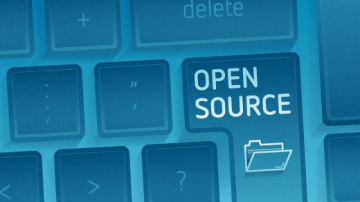Building a remote development team presents unique challenges. Trying to build a cross-functional team, full of various personalities, virtually can lead to communication disasters. Fortunately, through planning, smart hiring, training, and communication, project leaders can build and lead virtual development teams successfully.
The demand for remote teams continues to grow. The increased demand for software developers and new communication technology has removed the barriers of geography. Even with these advancements, disparate team members from different backgrounds may find it challenging to learn how to interact with one another.
It's easy for misunderstandings and miscommunications to occur. It's becoming more and more critical to rethink collaboration in a work environment growing increasingly more remote. As a result, project leaders must rethink the needs of teams spread out across the globe.
By avoiding a few key pitfalls, your team can overcome these challenges consistently. If you follow a few time-tested, in-house practices, and some that apply specifically to remote teams, you can manage a range of personalities and complete your build successfully.
The following are seven practices to avoid when managing a remote team.
Don't slack on training
A variety of different perspectives is the top benefit of working with diverse remote team members. However, it’s essential to understand and acknowledge those differences during training.
Addressing language differences is only one part of acknowledging team diversity. When recruiting programmers, it would be best if you focus on candidates with an aptitude for working in a multicultural environment and even in a multi-coding language environment.
Also, don’t make the mistake of thinking that personal characteristics are unimportant because team members aren’t working face-to-face. Team members still have to collaborate, so their personalities must mesh.
Training isn’t all technical skills. Emotional training can also help a team work well together remotely. Emotional intelligence training can help coworkers develop skills like empathy and awareness that can make teams work better together. Emotional distance can make it challenging to establish bonds between new trainees and team leaders from the get-go, which can immediately loosen bonds in what could be a strong remote team. Consider what remote team-building training you can do via video or on Slack. Remember that is it important to constantly be proactive in strengthening relationships throughout the life of your team.
Don't use an ad hoc communication system
When working with diverse remote team members, it’s essential that you use straightforward, effective code management and communication software. Ideally, you want the most uncomplicated resources available.
The process may need to be further simplified for newer team members and freelancers who do not have the time to learn everything about the ins and outs of the organization’s policies.
Create standard ways to communicate with team members. Maybe all work discussion happens in Slack or one of its open source alternatives, while teams use project management software to keep work on schedule.
Having a clear space for each type of conversation will help those who need to focus on work, while also offering an outlet for fun. Team members must use these resources daily, if not hourly. If your solutions are too complicated, learning to navigate the tools will pull focus from design and implementation work.
Don't lose sight of the big picture
Avoid the pitfalls of focusing too closely on daily goals. It is essential you stay focused on the overall project. You should work with team members to establish your goals and milestones, and make sure team members stay on schedule. As the project leader, it’s your job to make sure these key events contribute to deliverable milestones.
Don't micromanage your team
Some project managers, especially those with a coding background, find it difficult to delegate responsibility. It’s natural to gravitate toward solving familiar problems. However, it’s your job to guide the ship, not develop solutions.
In a micromanaged environment, the project manager tells the programmers what the code is, and exactly how to craft it. However, this management style ultimately leads to employee dissatisfaction.
Your team should feel free to explore solutions, initiate positive change, and use innovation for exciting new ideas.
If you don’t give your coders space to innovate and use their creativity, they feel undervalued. If this sentiment persists, your remote staff members are unlikely to produce the best work possible.
Use this opportunity to promote diversity
If you are going to build a remote team, you must understand and acknowledge that team members will have different backgrounds. This circumstance is especially beneficial. The diverse viewpoints of staff members will enable your team to offer insights that expand beyond that of a centrally located talent pool.
Also, your diverse remote team will give you access to experience with global trends. Furthermore, your team will be less likely to suffer from the effect of crowd mentality thinking.
With the freedom to innovate, team members will feel more comfortable offering their input. Together, these benefits will enable your team as a whole to build a product better suited for multiple regions and verticals.
Don't forget to keep an eye on costs
Ballooning costs are a top challenge for development teams. Despite project planning best practices, scope creep is a real problem for even the most experienced teams. There are two underlying factors that need to be addressed if this problem is to be solved.
The first is the fact that the more analysis that is done throughout the development process, the more complexity arises and is ultimately added to the system. The second factor is the fact that people who have been through system development before know that there won’t ever be a "second phase" of the project. They know that there will only be one shot at the project, so they try and fit everything possible into the initial project phase.
These two self-reinforcing factors lead to a death spiral of problems. Too much analysis leads to system complexity and loads of features being crammed into the first phase. A lack of trust between IT and business teams inevitably forms because of this. The design requirements become too big and complicated for there to be any chance of staying on schedule or on budget. Inevitably, blame lands with the IT team.
The answer to this problem is to restrict analysis to only what the business team needs right now. IT should refrain from speculating on what may be needed in the future or asking business team members what they may need down the line.
These requirements allow IT to build a reliable project plan and overall budget. If your team is looking to outsource the project at least in part, calculating the app development costs for each individual team or project component can help to keep things on track.
Don't think of time zone differences as a barrier
Do not view time zone differences as a challenge. You can leverage time zones to your advantage and build your team in a way that will keep the project running around the clock.
What is more important is choosing candidates who work independently. Good remote coders are responsible, organize their time effectively, and communicate well with team members. With an effective communication system, time differences will have no effect on the successful outcome of your team.
Remote team members benefit significantly from predictable and straightforward engagement. The relatively new remote work environment demands that staff members establish a new standard for clear, concise communication. To promote a collaborative environment, teams must establish norms, such as universal jargon and consensus on communication tools.
In an environment that thrives on innovation, predictability is an asset when it comes to teamwork. Everyone is different, and innovation is a sought-after commodity in software development. However, in the remote environment, consistent behavior helps team members communicate effectively.
Conclusion
Remote work is quickly becoming the new default for software development. Be sure to avoid these pitfalls to set your teams up for success.
Do you have any tips to recommend? Please share them in the comments.










Comments are closed.